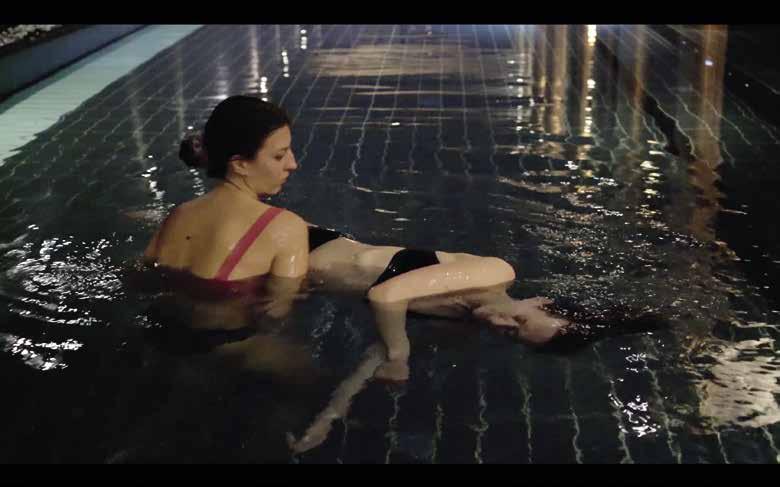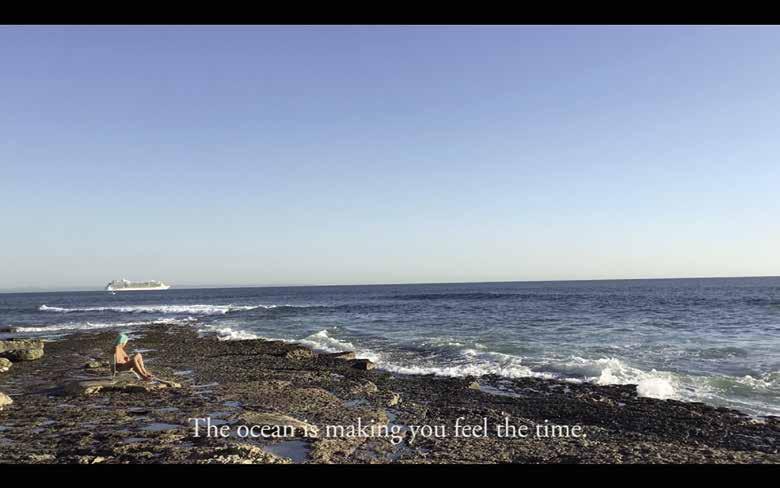Katarína Poliačiková
All Surfaces Are Our Surfaces
How can we relate to the history of Planet Earth through art? Katarína Poliačiková uses scientific knowledge and applies herself to research in her own practice, but what remains crucial for her is the personal perspective that provides facts with new meaning.
In 1755, the city of Lisbon was shaken by a destructive earthquake that became a turning point in European history: a trigger of the Enlightenment and our faith in progress, as well as a formative event for the establishment of a new type of beauty, taste, and aesthetics. In 1931, the philosopher Walter Benjamin selected this earthquake as one of the topics of his radio program for children, to whom he explains that this earthquake shook the world of the eighteenth century like nothing else. Given that it was based on information about this event that Immanuel Kant laid the foundations of scientific geography, Benjamin tells the children at the conclusion of his show how today, thanks to technological developments, we are able to predict earthquakes.1 Voltaire, in a poem written immediately after the event, rejected the period explanation of the earthquake as divine punishment; Zygmunt Bauman then connected the devastation of Lisbon with the beginnings of the development of secularism: “Its project was to tame nature and make it the subject of voluntary action, hoping that if everything was planned and arranged, the age of catastrophes would be over.”2 In 1978, Lisbon’s natural history museum burnt down and the scorched remainders of fossils gave rise to an exhibition realized by Katarína Poliačiková in the spaces of the museum itself.3 Although these two events are incomparable in scale, Katarína’s research on the potential of crisis as opportunity and the search for beauty in the scorched fossils of Souvenirs of Fire (2019) functions like a flashback that reawakens the repeatedly mediated memory of the Lisbon earthquake.
Thinking about the work of Katarína Poliačiková often means exploring the sediments of time through scientific metaphors, asking along with the artist how we can narrate the story of Planet Earth and how we can experience time: “In order to get closer to time, I place my feet in dinosaur footprints. (…) I took four steps in exactly the same way as a dinosaur did, a hundred million years ago,” says the narrator in the video piece The Story of Erath (2018). An example of musings on our perspective, changing in time, are the photographic assemblages composed of views of space re-photographed from a 1980s astronomical publication and the same views taken from the NASA archives in 2013 – The Way Geologists Liberated in Time, She Thought, Astronomers are Freed by Space (2013).
Through various media and perspectives, Katarína’s projects show how to relate to the world through our own experiences and memories, how to use the potential of non-scientific interpretations (returning, as it were, before Lisbon), and how to make personal the history of the universe. This line of thinking is also present in her last project, realized before the pandemic, which also included a live performance component. The video captures long minutes of Katarína’s body merging with the surface of a pool whose movement – its rhythm and intensity reminiscent of the waves of the sea – is controlled by the hands of a dancer. “Merging is the making present of the center,” “all surfaces are our surfaces,” “no water is more distant than our own tears” (Learning Water, Salty Eyes, 2020).
1 Walter Benjamin. The Lisbon Earthquake. In: Lecia Rosenthal (ed.). Radio Benjamin. London: Verso, 2014. pp. 651–672. p. 653.
2 See Stuart Jeffries. Modern Lover. The Guardian, November 12, 2005. https://www.theguardian.com/books/2005/nov/12/shopping. society.
3 Cf. Katarína Poliačiková. How Does Time Burn? Souvenirs of Fire in the National Natural History Museum in Lisbon. Artalk.cz. https://artalk.cz/2020/06/11/ako-hori-cas-suveniry- ohna-v-narodnom-prirodovednom-muzeu-v-lisabone/.
KATARÍNA POLIAČIKOVÁ is a graduate of the Academy of Fine Arts and Design in Bratislava. She studied in Prague, Bratislava, Berlin, New York, Lisbon and other cities. She works with photography, installation and video.
HANA BUDDEUS works at the Institute of Art History of the Czech Academy of Sciences, where she is a member of the Photography Research Center. She also recently joined the curatorial collective of the Fotograf Gallery.





#40 earthlings
Archive
- #45 hypertension
- #44 empathy
- #43 collecting
- #42 food
- #41 postdigital photography
- #40 earthlings
- #39 delight, pain
- #38 death, when you think about it
- #37 uneven ground
- #36 new utopias
- #35 living with humans
- #34 archaeology of euphoria
- #33 investigation
- #32 Non-work
- #31 Body
- #30 Eye In The Sky
- #29 Contemplation
- #28 Cultura / Natura
- #27 Cars
- #26 Documentary Strategies
- #25 Popular Music
- #24 Seeing Is Believing
- #23 Artificial Worlds
- #22 Image and Text
- #21 On Photography
- #20 Public Art
- #19 Film
- #18 80'
- #17 Amateur Photography
- #16 Photography and Painting
- #15 Prague
- #14 Commerce
- #13 Family
- #12 Reconstruction
- #11 Performance
- #10 Eroticon
- #9 Architecture
- #8 Landscape
- #7 New Staged Photography
- #6 The Recycle Image
- #5 Borders Of Documentary
- #4 Intimacy
- #3 Transforming Of Symbol
- #2 Collective Authorship
- #1 Face
